Restaurant Design and Interior Layout - The Ultimate Guide
The way we design the inside and how we place all elements is a very important part of how well a restaurant operates. It does not matter how innovative a design theme is, how good the location is, how exciting the menu looks; if the interior space and layout aren’t just as functional, there are high chances that you will have difficulty in attracting and retaining customers.There are many factors to juggle — What will the restaurant style and atmosphere be like? How can the interior be beautified but still prove functional? Will the safety regulations allow for the design to take form? How are you going to attract patrons and give them an unforgettable experience?... As an aspiring or new restaurant owner, this complete guide will surely be the inspiration you need to design the ultimate restaurant.
Business plan
Planning is an integral part of the food and beverage industry. Imminent success is guaranteed when proper planning and strategies are enforced from the conceptual phase on-forth.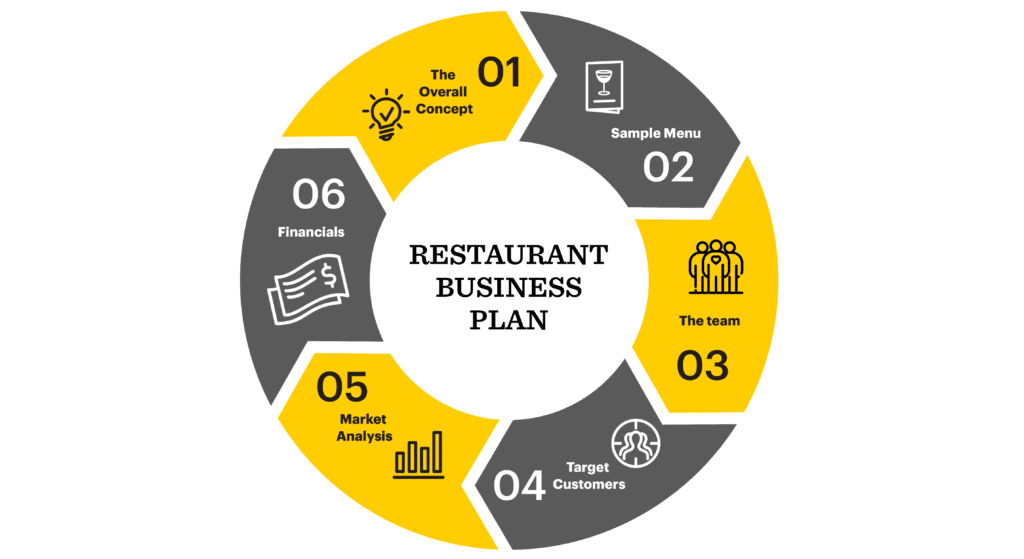 SourceA restaurant business plan is a step by step blueprint from which you can start to piece together everything; from your management team to menu design and developing your ideas into a reality. It will prove the viability of your concept, with an engaging answer to the question: “What does this new restaurant offer that’s not on the market already?”The strongest business plans always include all or most of these components:
SourceA restaurant business plan is a step by step blueprint from which you can start to piece together everything; from your management team to menu design and developing your ideas into a reality. It will prove the viability of your concept, with an engaging answer to the question: “What does this new restaurant offer that’s not on the market already?”The strongest business plans always include all or most of these components:
- executive summary
- vision and concept
- location analysis
- management team
- services
- sample menu
- interior design
- market overview
- business structure
- financial analysis
Types of restaurants
The range in the different types of restaurants continues to expand — varying from your executive fine dining establishment featuring a three-page wine menu to hip downtown burger eatery that serves a variety of hot sauces and cocktails. SourceYou have probably eaten at a restaurant and felt confused? Like an instance where the menu didn’t fit the overall ambience (too costly for a casual restaurant or too casual for a high-end restaurant). Usually, when this occurs, customers aren’t always looking forward to a repeat visit.To help avoid new restaurant growing pains, the initial stages of planning should involve coming up with an overall concept. Below are some basic restaurant types to decide from:
SourceYou have probably eaten at a restaurant and felt confused? Like an instance where the menu didn’t fit the overall ambience (too costly for a casual restaurant or too casual for a high-end restaurant). Usually, when this occurs, customers aren’t always looking forward to a repeat visit.To help avoid new restaurant growing pains, the initial stages of planning should involve coming up with an overall concept. Below are some basic restaurant types to decide from:
- casual dining
- family style
- fine dining or high-end
- fast casual
- fast food or quick serve restaurant
- café or bistro
- buffet
- pop-up restaurant
Restaurant regulations
The laws affecting restaurant businesses are diverse; mostly ranging from local building codes to health department regulations for foodservice operations.It’s a requirement to submit your floor plan for approval so that appropriate departments can sign off on operational elements that relate to your business; such as maximum occupancy, fire hazards, ventilation, food surface types, sink placement, ventilation, restroom regulations, and more.
Restaurant supplies, utilities, and catering equipment
An in-depth supplier database background research in your area is crucial to smooth operations. Convenience and promptness are very important also to the overall operations of the business.Don’t ignore your budget. Compare prices. Online reviews also help to make sure you choose the best vendors and suppliers that will contribute to the smooth running of the restaurant.
Restaurant floor plan
A successful floor plan is based on how it directs movement — or foot traffic. Make sure to consider all possible routes: where deliveries will be shipped in and how they shall be taken to storage, how chefs move from pantry to food prep, how servers pick up orders and bring them to the tables, and varying levels of comfort and privacy. Keep an eye out for areas where crowding could possibly occur.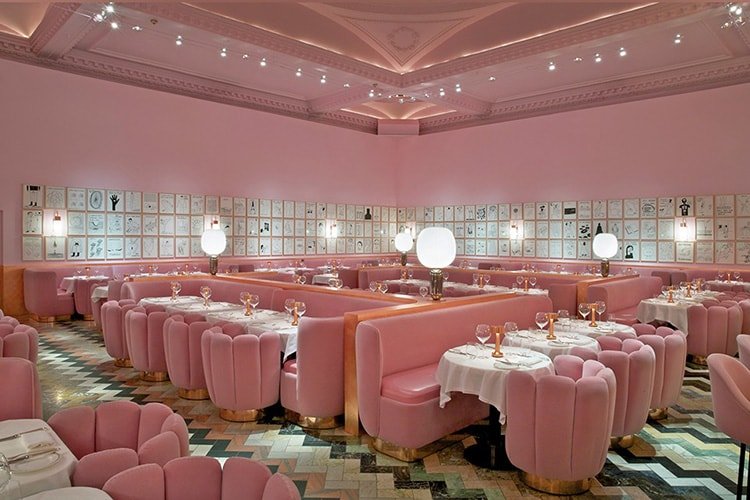 Essentially, the planning and design of a restaurant should dedicate 60% area in a floor plan to the dining area while the other 40% goes to the kitchen, storage, freezer, etc.The floor plan is commonly comprised of specific furniture elements such as dining booths, moveable tables and chairs, and bars/countertops. The dining area of a restaurant should also be flexible enough to adapt to unexpected demands.
Essentially, the planning and design of a restaurant should dedicate 60% area in a floor plan to the dining area while the other 40% goes to the kitchen, storage, freezer, etc.The floor plan is commonly comprised of specific furniture elements such as dining booths, moveable tables and chairs, and bars/countertops. The dining area of a restaurant should also be flexible enough to adapt to unexpected demands.
Ceiling design
Above is where one looks when they enter a space for the first time. Why? It is a subconscious reaction ordered by the brain. From the beginning of human life, people tended to look up when they entered an unknown territory for safety reasons.Today, people look up when they step into a new place out of curiosity. In fact, this is the reason why it’s very significant to have a unique ceiling design that would captivate customers when they visit an establishment.
Entrance
The entranceway represents a key element — it can emphasise the hospitality the staff will deliver or it can bring forth the theme of the restaurant. A good entrance contributes to the natural flow of the interior layout. Signage, entrance lighting and waiting area ambience and decorations are just a few areas to consider when designing a new restaurant.
Storage
There should be enough room for food storage. This may include a walk-in refrigerator, a walk-in freezer and a dry storage area with plenty of shelf space. A new, spacious walk-in refrigerator is a must have for a new restaurant, since refrigeration failures are common and can result in serious losses. Store area is traditionally designed adjacent to the kitchen. This serves as a storage facility for the kitchen and cutlery of the restaurant.
Restrooms
The most revealing moment guest experiences in a restaurant may not be at the table but in the bathroom. A well maintained bathroom reflects a clean establishment and reinforces that you genuinely care for your guests. Having the restroom as an afterthought should be a thing of the past as a number of surveys suggest that more than 80% of consumers would avoid a restaurant with a dirty restroom.Above all, it is essential to keep the restrooms away from guest tables and, where possible, away from the kitchen entry; movement to the restroom near tables or the kitchen path can negatively affect the customer experience and waiter efficiency. These spaces should be clear and free of odour in order not to tarnish the image of your establishment.
Heating and ventilation
People are comfortable in instances where there are thermal comfort and indoor air quality (achieved by temperature, humidity control good and ventilation).The heat is expectedly high (especially in kitchens) due to cooking, lighting, electrical equipment and the number of clients. HVAC (heating ventilation and air conditioning) forms the backbone for achieving a functional restaurant design.
Restaurant theme
Many new restaurants are building their business around a central theme or concept, and those concepts extend to how the dining space is organised and designed. The theme needs to be decided earlier on in the design process, as this is what will contribute to the majority of your design decisions.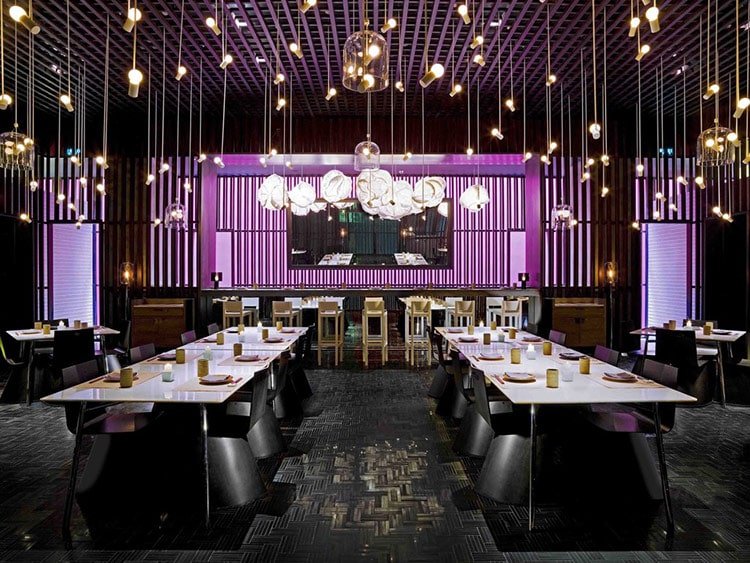 SourceThere are so many various options for restaurants when it comes to concept ideas. An apparent theme, for instance, would be to base it around the type of cuisine the restaurant specialises in. Whether it’s Arabic, Mexican, Italian, Japanese, Lebanese, Turkish or Indian, you can utilise the food’s country of origin when designing, and make it as subtle or as obvious as you like.Subtle themes, such as a modern diner, contemporary bar theme or romantic restaurant theme will also get customers into your restaurant — it’s just a question of considering the kind of atmosphere you’re looking to create.Of course, before settling on a theme, the aspect of longevity plays a huge role. Whilst you may have the budget for further future renovations, ultimately you may want to be more realistic and pick a theme that will stand the test of time, instead of a fleeting trend that will soon be a thing of the past. Think about coming into your establishment in five or seven years’ time — will it still be as appealing and exciting as it is now?
SourceThere are so many various options for restaurants when it comes to concept ideas. An apparent theme, for instance, would be to base it around the type of cuisine the restaurant specialises in. Whether it’s Arabic, Mexican, Italian, Japanese, Lebanese, Turkish or Indian, you can utilise the food’s country of origin when designing, and make it as subtle or as obvious as you like.Subtle themes, such as a modern diner, contemporary bar theme or romantic restaurant theme will also get customers into your restaurant — it’s just a question of considering the kind of atmosphere you’re looking to create.Of course, before settling on a theme, the aspect of longevity plays a huge role. Whilst you may have the budget for further future renovations, ultimately you may want to be more realistic and pick a theme that will stand the test of time, instead of a fleeting trend that will soon be a thing of the past. Think about coming into your establishment in five or seven years’ time — will it still be as appealing and exciting as it is now?
Colour scheme
The use of colour to elevate an interior space into an upscale restaurant should never be taken for granted or be an afterthought. Colour affects far more than just the aesthetics: it can touch on the mood of inhabitants; stimulating different emotions in many ways including what food they choose or the amount of money they decide to spend.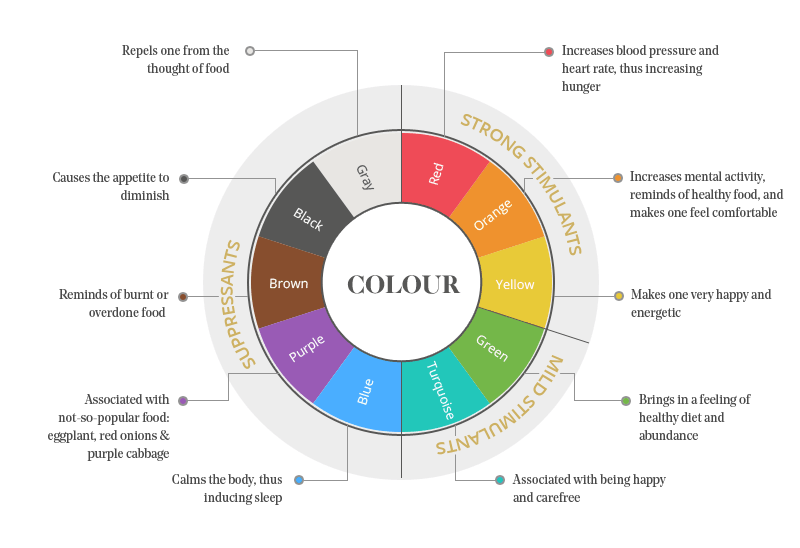 SourceDifferent colours stimulate different subconscious reactions and can profoundly impact feelings of hunger, thirst, alertness etc. For this reason, specific colours in interior design are suggested for certain restaurant formats.
SourceDifferent colours stimulate different subconscious reactions and can profoundly impact feelings of hunger, thirst, alertness etc. For this reason, specific colours in interior design are suggested for certain restaurant formats.
Popular restaurant interior colours and their impact on customers include:
Light neutral colours: white, beige, and light grey
Like with any other small interior space, painting interior walls with any of the light colours will help you make a compact restaurant feel roomier and airy. Light hues such as white and beige have been proved to evoke a leisurely and sophisticated atmosphere, making guests want to stay more as they feel cosy and relaxed.
Relaxing colours: green and brown
Green is known to be associated with nature, as it creates a calm atmosphere within and around interior spaces. Painting the restaurant green communicates freshness and healthy options. Health-based restaurants should apply a calm tone of green on their walls, and a little hint of woody brown helps convey a more elegant experience.
Strong appetite stimulants: bright shades of red, orange and yellow
Yellow, orange and red are widely used in logo design as they are the most comfortable colours to see. These colours are known to increase heart rate and blood pressure while creating an exciting emotion, resulting in fast consumption and early exits. Therefore, it is advisable that this colour palette is used for places which have a high footfall and require customers to move along quickly.
Furniture
The furniture determines the nature, quality and overall style of your restaurant. Comfort is a worthy consideration; will guests feel wowed when they’re sitting for half an hour or more? The external design and visibility matter too. Is your furniture handcrafted and ornately styled? Is it minimalistic and in tune with the times?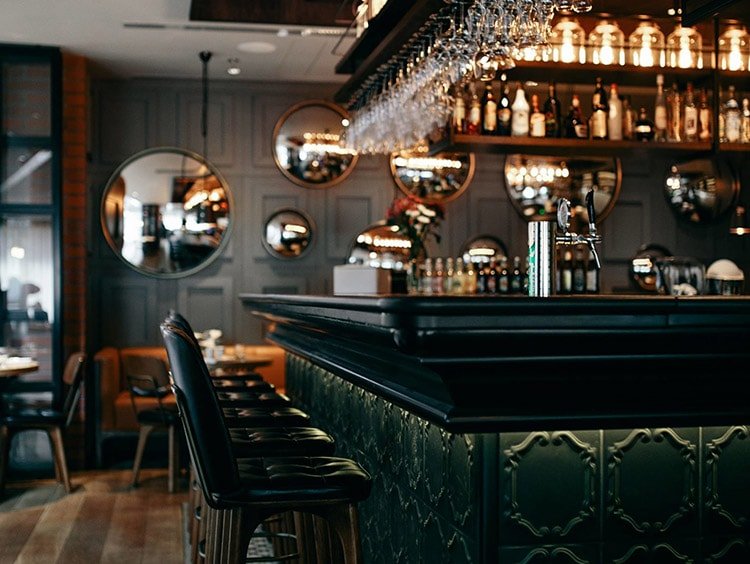 Picking the right chairs and tables for a restaurant is no easy task. Many parameters are taken into account: the price, design and space constraints. On that note, design alone should never take precedence over comfort and functionality. Regular changes may have to be maintained from time to time to suit the customers’ needs.
Picking the right chairs and tables for a restaurant is no easy task. Many parameters are taken into account: the price, design and space constraints. On that note, design alone should never take precedence over comfort and functionality. Regular changes may have to be maintained from time to time to suit the customers’ needs.
Chairs, barstools, booths and benches
Seating comes with many possibilities, unlike tables. There are single chairs, stools, booths, sofas or a mix of them. Next, you have to decide on material and finishing: wooden, leather, metal or plastic. The decisions though should reflect the desired ambience and theme.For example, sofas and booths usually fit well in a family-friendly restaurant and casual eateries as they add to the intimacy of the meal. On the other hand, elegant leather chairs are a better choice for formal or fine dining restaurants.
Square, rectangular and circular tables
Restaurant chairs go hand in hand with the table choice. They should comfortably fit under the table and match the design. Square tables are the most popular shaped table in restaurants.They are used alone to cater for two or four guests or can be close together to cater for larger groups. Rectangle shape tables are suited for restaurants at which larger groups are expected; while circular tables are used in more casual establishments.
Lighting
A well done interior design will improve people's mood and having the right lighting is a key part of making sure your restaurant does so. The correct lighting can turn patrons into loyal customers.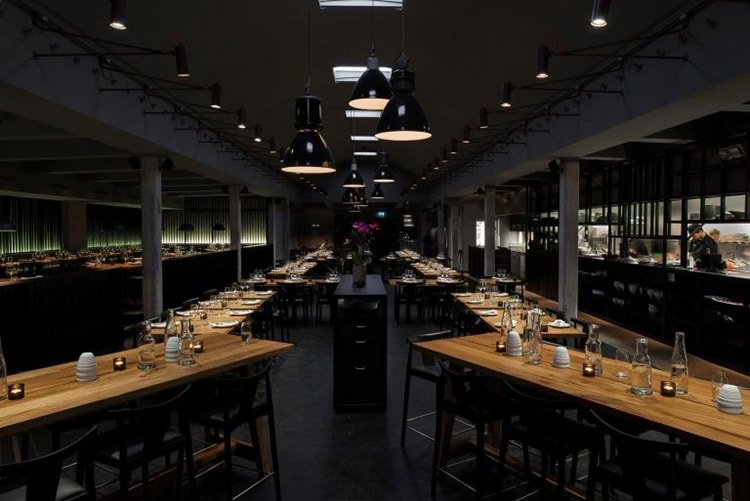 Source
Source
Exterior lighting is crucial
Correctly lighting the exterior of the building helps to draw attention to the restaurant and let potential diners know that it is open for business. The lighting has to add appeal to the exterior and provide enough illumination to give a sense of security and visibility.
Layer light to set the mood and accent the decor
In order to have the proper lighting effect, you'll need a couple of layers of light to set the tone for space and distinguish the different area. Ambient light contributes to the general level of lighting, while accent lighting can focus attention to the architectural elements of the room. Direct illumination will also be necessary for areas such as cash registers, bar area, and the kitchen.
Pay attention to light presentation
The restaurant lighting should show the true colour of the food and drinks being served. If the lighting changes the colour of the food, it detracts from the visual impression and the overall dining experience.
Setting an ambience
The right mood setting or ambience plays a pivotal role in customer satisfaction and retention. So, even though your design scheme and fantastic food will undoubtedly be the main focus of your operations, it’s important not to underestimate basic decisions such as the aroma and music in the planning process.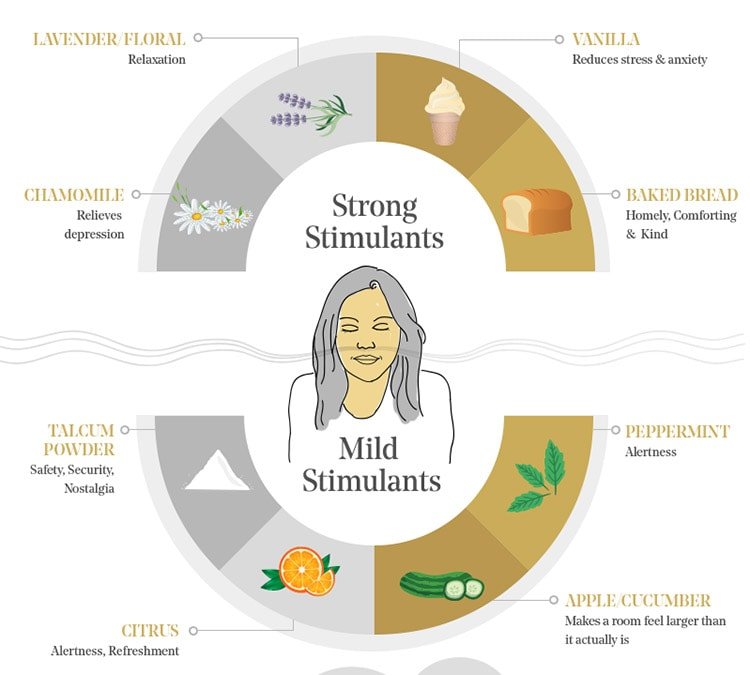 SourceScents that trigger a response in most people are requisite; for example, lavender has a relaxing effect on the human brain. Vanilla and chamomile aid in reducing stress, depression and anxiety while citrus and peppermint can enhance alertness.There are also smells that can influence how we perceive a room. Apple and cucumber scents will make a room feel more open and airy while barbecue smoke, makes a room feel compact and stuffy than it really seems.Music decisions can also change everything. A certain tune may immediately transport you to a different time and place. In the right atmosphere, music is not just notes — it’s an experience.Decide on whether you want to create a fun, casual vibe for game days or a romantic spot suitable for date nights. Thinking of your guests' needs will be a handy reference point for the overall ambience scent and music choice.
SourceScents that trigger a response in most people are requisite; for example, lavender has a relaxing effect on the human brain. Vanilla and chamomile aid in reducing stress, depression and anxiety while citrus and peppermint can enhance alertness.There are also smells that can influence how we perceive a room. Apple and cucumber scents will make a room feel more open and airy while barbecue smoke, makes a room feel compact and stuffy than it really seems.Music decisions can also change everything. A certain tune may immediately transport you to a different time and place. In the right atmosphere, music is not just notes — it’s an experience.Decide on whether you want to create a fun, casual vibe for game days or a romantic spot suitable for date nights. Thinking of your guests' needs will be a handy reference point for the overall ambience scent and music choice.
Menu design
Wondering how to create a restaurant menu? Once the decision on the concept of the restaurant is finalised, you’ll need to think about the menu because at the heart of any successful marketing plan is a well thought-out menu design.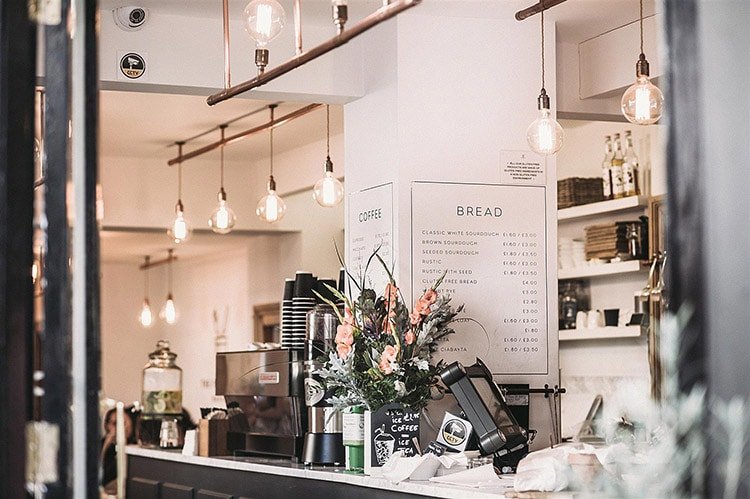 When writing your menu, it’s important to understand the link between your kitchen and your menu, as well as the client demography the restaurant is looking to attract. The size of your kitchen will have a direct impact on the size and style of the menu at the offer.More importantly, your menu should be able to convey the restaurants’ brand identity, in the manner that will educate a guest about the experience they are about to receive, get them excited to be there and make them want to come back.
When writing your menu, it’s important to understand the link between your kitchen and your menu, as well as the client demography the restaurant is looking to attract. The size of your kitchen will have a direct impact on the size and style of the menu at the offer.More importantly, your menu should be able to convey the restaurants’ brand identity, in the manner that will educate a guest about the experience they are about to receive, get them excited to be there and make them want to come back.
Staff uniform
The role of uniforms in the hospitality industry is manifold. First of all, it identifies the working staff in the restaurant, instils guest confidence and protects the restaurant image by creating and emphasising the brand. In addition, it promotes a productive working environment that meets all the safety and health requirements.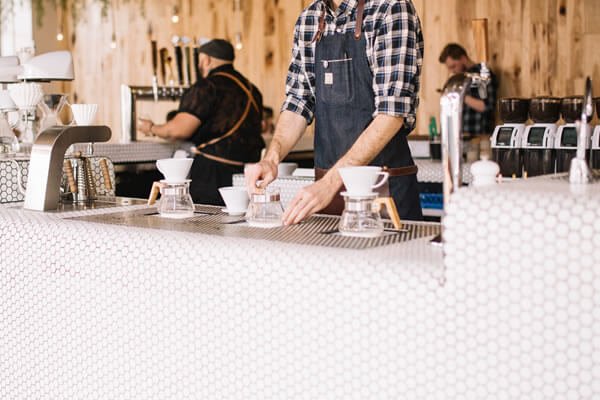 To attract high-end customers, you may want to opt for a uniform that matches the atmosphere of the business, such as a neat, crisply professional look — like formal waistcoats and pants. On the other hand, a casual café is likely to spot a more laid-back uniform style that still looks professional and neat.Very formal settings often follow the tradition of formal gatherings: hence uniforms in a neutral palette of black or navy with white or beige are most common. For more casual settings, consider a vibrant colour choice, as long as it’s in line with your brand and the energy level of the restaurant.
To attract high-end customers, you may want to opt for a uniform that matches the atmosphere of the business, such as a neat, crisply professional look — like formal waistcoats and pants. On the other hand, a casual café is likely to spot a more laid-back uniform style that still looks professional and neat.Very formal settings often follow the tradition of formal gatherings: hence uniforms in a neutral palette of black or navy with white or beige are most common. For more casual settings, consider a vibrant colour choice, as long as it’s in line with your brand and the energy level of the restaurant.
Final thoughts
It’s not enough to design a pretty restaurant space; it should be functional and smart, too. To make the most out of every inch in your rented building, proper planning and layout are needed to ensure the great customer experience.However, getting your restaurant interior design completed shouldn’t be your only priority. Making sure it’s done correctly is also crucial to its operation, workflow and circulation. Have as many hands on deck as you need to ensure a seamless and consistent process.To avoid getting lost in the details, it’s best to contact and hire a consultant or interior design company to visit your restaurant and help adjust its floor layout, lighting, flooring, paint colours, furniture, and decoration.The team of professionals are trained to be organised, creative, and versatile — and will make it a point to focus on the design elements that make up a functional space — and provide you with a unique interior engineering process that facilitates a successful operational circulation in the eatery.This means you have ample time to focus on the business aspect of things without having to approve every design detail; which saves you time and money in the long run. After all, it’s their job to make sure the finished product reflects your restaurant’s essence and ultimate goals.
